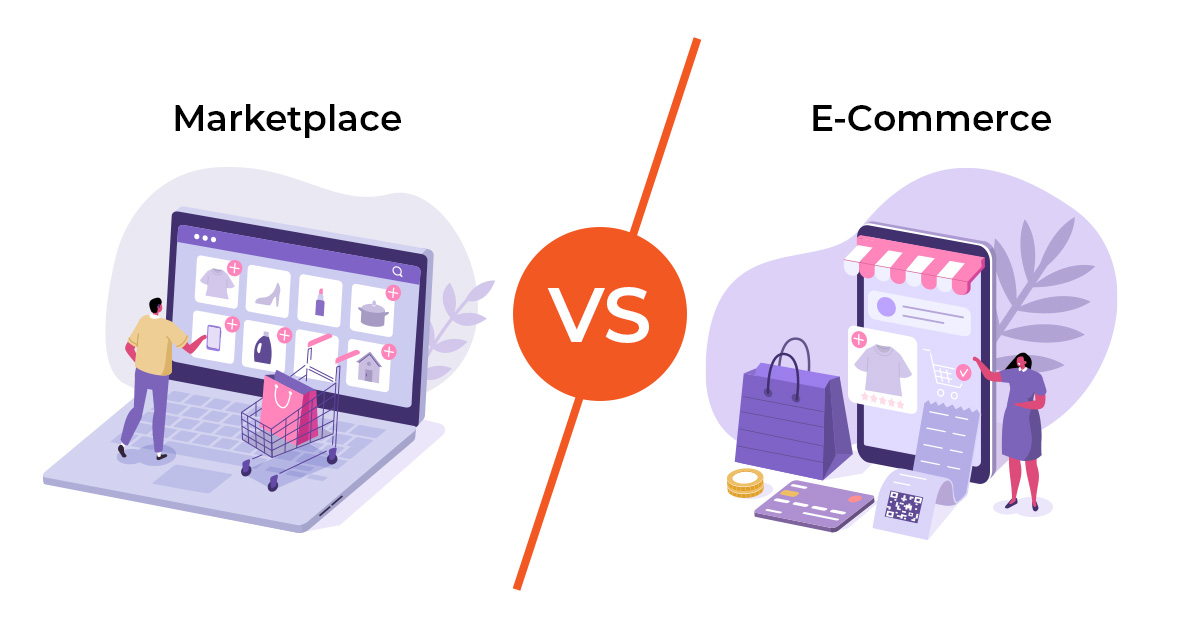Mastering the Art of Ecommerce Brand Marketing by Crafting a Winning Strategy
In today's fast-paced digital landscape, ecommerce has emerged as a key player, revolutionizing the way businesses operate. With the rise of online shopping, both ecommerce brands and marketplaces have witnessed tremendous growth. However, when it comes to marketing strategy, a crucial question arises: should vendors focus on building their ecommerce brand or rely on the marketplace itself? This article delves into the strategies and tactics that can help you captivate your target audience, whether by focusing on building your ecommerce brand or harnessing the power of the marketplace itself.
Building the Ecommerce Brand
Establishing a strong ecommerce brand comes with a multitude of benefits. By focusing on brand building, vendors can create a unique identity that resonates with their target audience. This enables them to cultivate brand loyalty and forge lasting relationships with customers. A well-crafted brand strategy allows businesses to differentiate themselves from competitors, making it easier to stand out in a crowded marketplace.
Additionally, a strong ecommerce brand provides vendors with increased control over their reputation, messaging, and customer experience. By owning and managing their online presence, vendors can curate a consistent brand image across various touchpoints, including their website, social media channels, and packaging. This level of control enhances customer trust and builds credibility, leading to higher conversion rates and customer retention.
However, it's important to note that building an ecommerce brand requires substantial time, effort, and investment. Vendors must invest in marketing campaigns, content creation, and customer engagement initiatives to build awareness and drive traffic to their platform. They need to develop a comprehensive marketing strategy encompassing search engine optimization (SEO), social media marketing, influencer collaborations, and more. Building a brand from scratch can be challenging, particularly for new entrants in the market.
Unleashing the Power of Marketplace
Alternatively, vendors can choose to focus their marketing efforts on leveraging the existing marketplace. Joining a well-established ecommerce marketplace provides immediate access to a vast customer base, eliminating the need for extensive brand building and customer acquisition efforts. Marketplaces often have robust marketing channels, sophisticated algorithms, and a loyal customer base that can drive significant traffic to vendors' listings.
By capitalizing on the marketplace's reputation and resources, vendors can benefit from increased visibility and trust. Customers tend to associate marketplaces with reliability, variety, and convenience, which can enhance conversion rates and sales. Moreover, marketplaces handle critical aspects such as payment processing, customer support, and logistics, freeing up vendors' time and resources to focus on product development and fulfillment.
However, relying solely on the marketplace can have its drawbacks. Vendors may face increased competition within the marketplace, making it harder to stand out from competitors offering similar products. Since marketplaces often prioritize customer experience over individual vendor branding, vendors may struggle to differentiate themselves and build a loyal customer base. Additionally, marketplace fees and commission structures can impact profit margins, potentially reducing the overall profitability of vendors' businesses.
How to Find the Right Balance?
While there are pros and cons to both approaches, the ideal marketing strategy lies in finding a balance between building an ecommerce brand and leveraging the marketplace's resources. By doing so, vendors can enjoy the best of both worlds.
Vendors should prioritize building a strong ecommerce brand by investing in quality products, excellent customer service, engaging brand storytelling, and creating consistent visual branding esp via social media. This helps create a unique selling proposition and fosters customer loyalty, irrespective of the marketplace. Simultaneously, vendors should capitalize on the marketplace's existing customer base, marketing channels, and infrastructure to drive initial sales and expand their reach. Leveraging the marketplace can provide an additional boost to your marketing efforts.
In the dynamic world of ecommerce, marketing your brand effectively is paramount. By investing in brand building and leveraging the marketplace's resources, you can capture the attention of your target audience, foster loyalty, and achieve sustainable growth. Remember, in the realm of ecommerce, the combination of a captivating brand and a thriving marketplace presence is the ultimate recipe for success.

